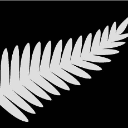- Home
- /
- Programming
- /
- Programming
- /
- Creating a multiway table
- RSS Feed
- Mark Topic as New
- Mark Topic as Read
- Float this Topic for Current User
- Bookmark
- Subscribe
- Mute
- Printer Friendly Page
- Mark as New
- Bookmark
- Subscribe
- Mute
- RSS Feed
- Permalink
- Report Inappropriate Content
I have the following data
data have;
input year_2000 year_2001 year_2002 area gender;
cards;
1 1 1 6 1
1 1 1 8 1
1 1 0 8 2
0 1 1 6 1
1 1 1 8 1
;
run;
I am looking at creating the following table with sum value of '1' under year_2000 to year_2002, stratified by 'area' and 'gender', separately. In the end the 'total' row is total in each year (by 'area' or 'gender', it will be the same).
Any guidance on how to go about making this table?
Thanks!
Accepted Solutions
- Mark as New
- Bookmark
- Subscribe
- Mute
- RSS Feed
- Permalink
- Report Inappropriate Content
If you want a similar result without additional processing.
proc tabulate data=HAVE;
class AREA GENDER;
var YEAR_2000 YEAR_2001 YEAR_2002 ;
table AREA GENDER all,(YEAR_2000 YEAR_2001 YEAR_2002)*sum=' ';
run;This data storage layout is really bad though.
- Mark as New
- Bookmark
- Subscribe
- Mute
- RSS Feed
- Permalink
- Report Inappropriate Content
First transpose the data:
data transposed;
set have;
length group $ 10 subgroup 8 year $ 4 value 8;
array years year_:;
do i = 1 to dim(years);
year = scan(vname(years[i]), 2, '_');
value = years[i];
group = 'gender';
subgroup = gender;
output;
group = 'area';
subgroup = area;
output;
end;
drop i year_: area gender;
run;Afterwards proc report could be used, except for the total-row. i thought about using a multilabel format, but wasn't able to create the expected output:
proc report data=work.transposed;
columns group subgroup year, value;
define group / group ;
define subgroup / group;
define year / across;
define value / sum;
run;- Mark as New
- Bookmark
- Subscribe
- Mute
- RSS Feed
- Permalink
- Report Inappropriate Content
data have;
input year_2000 year_2001 year_2002 area gender;
cards;
1 1 1 6 1
1 1 1 8 1
1 1 0 8 2
0 1 1 6 1
1 1 1 8 1
;
run;
proc sql;
create table want as
select 'Area' as a length=40,put(area,best. -l) as b length=40,
sum(year_2000) as year_2000 label='2000',
sum(year_2001) as year_2001 label='2001',
sum(year_2002) as year_2002 label='2002'
from have
group by area
union all
select 'Gender' as a length=40,put(gender,best. -l) as b length=40,
sum(year_2000) as year_2000 label='2000',
sum(year_2001) as year_2001 label='2001',
sum(year_2002) as year_2002 label='2002'
from have
group by gender
union all
select 'Total','Total',
sum(year_2000) as year_2000 label='2000',
sum(year_2001) as year_2001 label='2001',
sum(year_2002) as year_2002 label='2002'
from have
;
quit;
proc report data=want nowd spanrows;
column a b ('Year' year_2000 year_2001 year_2002);
define a/group 'Characteristics' style={vjust=m};
define b/display 'Sub Group';
run;- Mark as New
- Bookmark
- Subscribe
- Mute
- RSS Feed
- Permalink
- Report Inappropriate Content
If you want a similar result without additional processing.
proc tabulate data=HAVE;
class AREA GENDER;
var YEAR_2000 YEAR_2001 YEAR_2002 ;
table AREA GENDER all,(YEAR_2000 YEAR_2001 YEAR_2002)*sum=' ';
run;This data storage layout is really bad though.
April 27 – 30 | Gaylord Texan | Grapevine, Texas
Registration is open
Walk in ready to learn. Walk out ready to deliver. This is the data and AI conference you can't afford to miss.
Register now and lock in 2025 pricing—just $495!
Learn how use the CAT functions in SAS to join values from multiple variables into a single value.
Find more tutorials on the SAS Users YouTube channel.
SAS Training: Just a Click Away
Ready to level-up your skills? Choose your own adventure.






